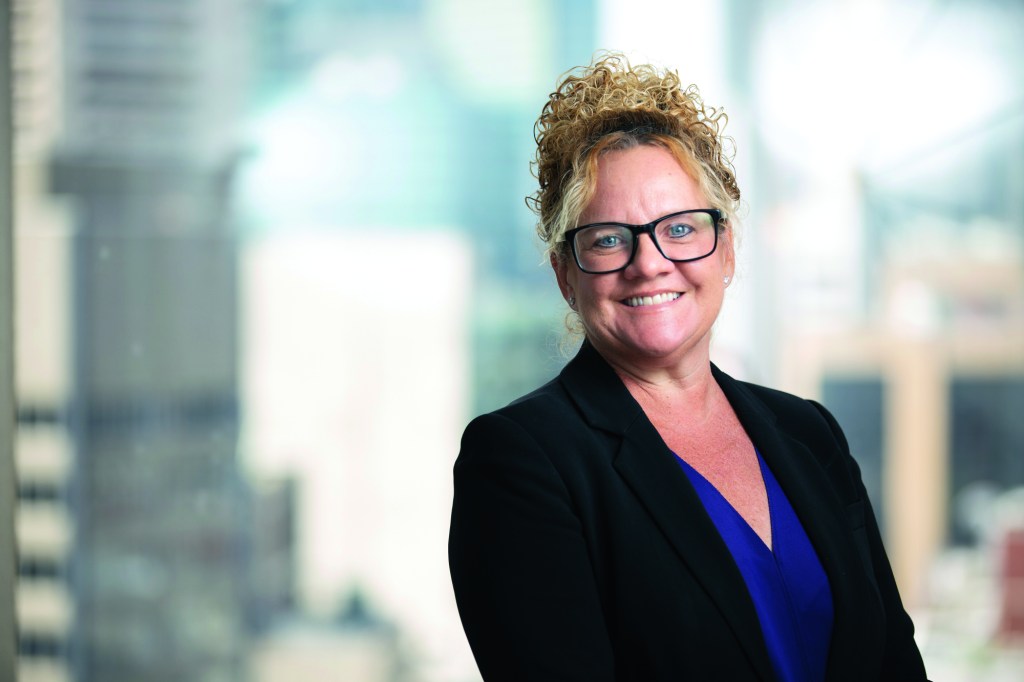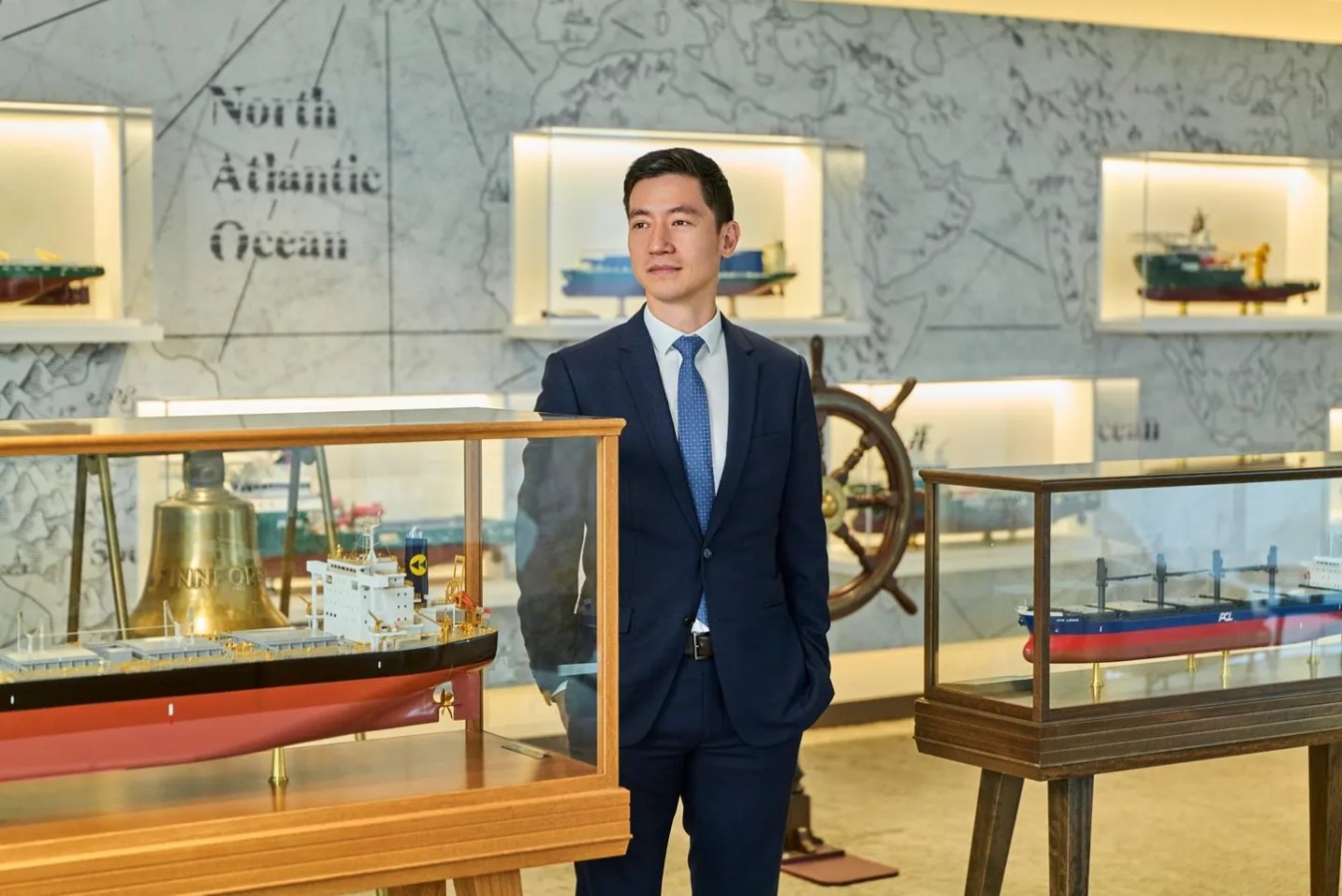4D Infrastructure’s global portfolio manager, CEO and emerging markets specialist, Sarah Shaw, says while the investment landscape is currently “fragmented”, she’s focusing on the longer game. Shaw spoke with Stewart Hawkins about geopolitical risks and opportunities, why not all emerging markets are created equal and why she ignores much of the short-term noise.
What is your philosophy as an investor? What are your fundamental principles?
We invest in the developed and the emerging world. We think emerging markets are too important to ignore. They make up 85% of the global population, so they have significant ramifications for global investment.
We are completely index agnostic. I don’t like investing based on the size of the inclusion in an index. We’re investing against fundamentals with diversification across regions and sectors. We think you can position infrastructure for all points of an economic or market cycle – [you have] that ability to position, both at an in-country and global level, to capture the economic cycles as well as the long-term thematics.
Where are we in the cycle?
It’s very fragmented.
We definitely have cycles, but it’s not a global cycle anymore. [It’s not] this globalisation scenario where we all went through inflation at the same time, we all went through interest rates rising at the same time; it’s disconnected. I also think there’s a big disconnect between the US and emerging markets. They’re no longer pegged to the US dollar. They’re no longer having to raise interest rates if the Fed raises interest rates, so their debts don’t balloon because they’re generally net lenders as opposed to net borrowers. There are also different economic drivers in countries now. I won’t say inflation has turned a corner everywhere because it hasn’t. Brazil’s inflation is still a big issue, whereas the US seems to have turned a corner, but demand is very strong, and we see that interest rates will stabilise much higher than they have been historically, as will inflation.
You can’t even lump Europe together anymore because you’ve got Germany, which is very weak, and Spain, which is very strong. It’s a very economy-specific trajectory at the moment, which is the beauty of being a global investor. You can capitalise on those in-country cyclicals as well as global trends.

What are you expecting on a macroeconomic front for the rest of the year?
We’re still seeing consumption relatively robust in many economies [but] places like Germany and France are weak. We are seeing interest rates peaking in most economies. Again, not everywhere. We may see one or two cuts around the world this year, but not three, four, five.
It’s very fluid based on geopolitical activity. Trump’s tariffs could be inflationary, but at the same time, those tariffs could also be growth destructive to other economies. I see a little bit more of an interest rate decline, inflation relatively stable within the band, and consumption relatively solid, but with that big swing factor that is called Trump 2.0.
Do you think Trump 2.0 will be radically different from Trump 1.0?
He’s got nothing to lose, has he? Last time, he came in at a very different point of the economic cycle. Ultimately, though, I do think he’s a businessman. He always goes in hard and strong and then looks to negotiate, but it’s just how willing he is to negotiate. And the optionality that the trading partners, in particular for, say, the tariff side of things have. China was in a different position back under Trump 1.0.
China is now facing structural issues [and] looking for stimulatory measures. It may be a more difficult dynamic for them this time around if they do need that US trade partner.
Unfortunately, China decided to transition from an export-driven economy to a domestic-driven economy a decade ago, not really considering that they have a declining population, so [China] needs to be an export-driven economy. This is where they differ this time around. [The] biggest form of stimulus is infrastructure investments. Historically, they’ve done that very well. Their high-speed rail network is evidence of that.
What about market volatility under Trump? Positive or negative?
That volatility can represent an opportunity or an opportunity to add alpha*. [However], infrastructure is a slow-moving beast.
The beauty of it is that [it’s] real assets, long-term, visible, and resilient earning streams underpinned by contract or regulation. If you understand those foundations and look through the geopolitical or populist noise, then the noise can represent an opportunity.
Unfortunately, some of [Trump’s] rhetoric is very noisy towards infrastructure. By that, I mean he’s looking to wind back parts of the Inflation Reduction Act, which are very supportive of renewable investment. That’s noisy for any utility with a growth profile linked to US renewables. By contrast, he’s, “drill, baby, drill.” He’s very supportive of pipelines and midstream operators, so they can get a little bit ahead of themselves based on this rhetoric about, “We’re going to be fossil fuel geniuses and export to the world.” [If tariffs] prove to be inflationary and we see a shift in interest rate commentary, then that impacts infrastructure because we are incorrectly perceived in a lot of places as being a bond proxy.
What about the other flashpoints in the world? What effect do you think they will have?
Geopolitical noise is probably one of the biggest thematics within global investing at the moment. This rise of populism again, and then the existing conflicts like Ukraine, Russia, and particularly the Middle East, are very contentious issues. You have to look through the noise and determine how it will impact the fundamental investment opportunities.
We believe that China has a little bit too many domestic issues to be worrying about Taiwan right now, but it will still be noisy. We’re not saying China’s going to invade Taiwan, but the noise will persist.
When Russia invaded Ukraine, our immediate thought was, ‘We didn’t have exposure to either Russia or Ukraine. But what did it mean for a global landscape, and clearly energy, gas?’
For us, it was also around trade routes, if you had to avoid certain parts of the world, what that meant for shipping lines, ports and airports – same thing with air traffic. You’d have to avoid certain airspace.
Is the current weakness of the Australian dollar an opportunity or risk?
We always get questioned, hedged or unhedged? It’s very hard to support jumping into unhedged when the Australian dollar is at 60 cents. One thing I would say is that there’s more than one currency. That’s the beauty of being a global investor. I have less than 25% of my portfolio exposed to the US dollar.
But there’s also a cost to carry to hedging. If you look at the charts, unhedged versus hedged over an investment cycle, it doesn’t make that much difference. Currency can add volatility positively or negatively, but being truly diversified regionally or by currency mitigates some of that impact.
Can you give us a quick history lesson? Emerging markets were the darling of the investment world in the early years of the century, and now they are underperforming – at least the broader indexes are. What happened?
Taking a step back, it’s difficult to lump every emerging market into one bucket – they are so diverse.
You can’t compare China to Brazil. You can’t compare Brazil to Indonesia. They’ve each had a period of underperformance in that period. Russia is in a risky area. Brazil had a period of huge political impeachment and macro uncertainty. India was very lacklustre at the beginning of it. Now it’s gone gangbusters. China was the golden child and now down the toilet.
What is different is the fundamental drivers of each of those countries. Some of them evolved significantly, and some of them have probably gone backwards.
There have been some strong advancements in places like India, Brazil, and parts of Latin America.
Emerging market investment has to be one of the most exciting opportunities over the coming decades, and I will be very biased here; I think the best way of gaining exposure to it is through infrastructure because you get all the upside while limiting the risk. You get access to the entire in-country domestic demand story while hedging some of the key risks, whether they be inflation, whether they be sovereign intervention, because the governments know that they need infrastructure.
I want to gain exposure to emerging markets because I want to capitalise on the emergence of the middle class. 85% of the globe lives in emerging markets. That’s only going to increase as a percentage because we’ve got the developed market going backwards and the emerging market growing population-wise. You’ve got five billion people wanting a better way of life. How does that start? It starts with three meals a day as your wealth improves. Then it’s, ‘I want indoor plumbing, I want clean water, I want gas.’ Over time, it’s, ‘I want to go and see the world, expand horizons, and get a better job.’ That’s airports.
How do you hedge the risks of emerging markets?
Governments, particularly in the emerging world, have recognised that if they want their countries to evolve, if they want the infrastructure that is needed to sustain society, then they need private sector capital to do it because they do not have the budgets to do everything that they want anymore. While they need your private sector dollar, you’re pretty confident of getting a solid return because they want you to continue
to invest. When they don’t need your dollar, get out. And that’s any country, but that’s not going to happen in my lifetime.
There are a hundred trillion dollars, minimum, of infrastructure investment needed by 2040 globally, and no government in the world can support that.
I think [China’s president] Xi is a perfect example. One of his biggest goals is wealth equality. He needs a bigger middle class. If you are an infrastructure investor, you’re helping him achieve his goals, and he’s going to uphold your contracts, or he’s not going to get that investment.
At what point, though, do you say, “I’m not going to invest” because of social consequences?
[In China] I’m only investing in those [companies] that are listed on the H share market**, improving minority protection, and that protection means that minorities, not the government, get to vote on any major transactions.
China is a good example because it’s very different to other parts of the world. Investing in an SOE [state-owned enterprise] generally means you get the best assets. Whereas in other parts of the world [SOEs] are run more as a social enterprise with no regard for shareholder value. [For example] historically a government-owned company in Brazil like an Eletrobras or a Petrobras, while listed with external shareholders, was still managed as if a government organisation to provide social license with zero regard to shareholders generating a return on their investment dollar – that is not a sustainable investment proposition.
In China, listed SOEs have been listed to access private sector capital to help fund much needed infrastructure investment and if they want the capital, they need to make the investment attractive. You don’t have to like Xi, to like some of his policies, eg. wealth equality. If I’m investing to help him achieve that across his population, I’m okay with it.
What safeguards do you have in place?
As part of our investment process – before we even look at companies – we look at the country first, and we do what we call a country risk assessment. We look at financial risk, economic risk, political risk, and sustainability factors, and we assess those countries to determine whether they’re what we call green, amber, or red. Red means they’re completely uninvestable; it doesn’t matter how good the company may be. This is my first gate. If I can’t get an acceptable investment destination, we don’t even look at the companies.
I think the amber ones are the interesting ones. It’s the ones that are improving or deteriorating, and that could be for whatever reason. The grading is generally dictated by the weakest link. It’s not a [percentage] weighting. It could be economically fine, financially fine, sustainability fine, but there’s a political issue or a governance issue, and [then] it’s out. A great example of that would be Russia. Clearly Russia’s red; it’s uninvestable to us, but it’s been red since day one at 4D.
China has been assessed on these bases – it’s amber. It was green, but it’s gone down more [because of] the structural issues that it is facing and how it is going to resolve those, the population dynamic, and the youth dynamic. But if [Xi’s] going to invade Taiwan or there’s any sanctions put against him, clearly, we’re going to have big issues.
What about sustainability and environmental concerns?
I think sustainability is key and integrated into every step of our process. It’s a screening tool. We won’t have in our universe anything that’s dominated by a dirty fossil fuel, particularly like coal or oil. I think gas is part of the [energy] transition, so we do like gas. We also screen on governments’ metrics and social metrics as well.
Governments are clearly important, but to be honest, in most parts of the world, governments come and go. I’m looking at 30 and 40-year assets; bigger and more important to me is the strength of your judicial system.
If my contract and regulation can’t be upheld by the courts, then there’s no way I’m going anywhere near it.
You’ve said infrastructure is the investment theme of the next few decades. That’s a big call.
Yep. And I truly believe it. It should be in every person’s portfolio.
It has defensive characteristics that give you long-term, visible, and resilient earnings streams [which] either underpin a strong yield or growth. What is not as well understood is the huge potential growth underpinning the asset class.
There are five thematics that must happen, or we as a globe are going backwards socially and economically.
First and foremost [is] developed market replacement spend. Our infrastructure is so old and inefficient that it’s falling and creating economic upheaval. I’ll give you some examples. In the US, they’re still pulling out wooden water pipes from the ground. US towns are being serviced by 100-year-old wooden water pipes. Over 50% of the bridges in the US are past their useful life. And that’s the same in Germany and the UK. London’s water mains are over a hundred years old. The train from here [Sydney] to Newcastle is slower than in 1929. That is ridiculous and inefficient.
The second one is population growth. [Global population is] currently eight billion. We’re going to peak at 10.4. We’re putting another two billion people on this planet.
That population growth is all coming from the East, with the West getting older.
The third thematic is the emergence of the middle class in developing economies. The fourth is the energy transition and decarbonising the globe. We’re currently spending one trillion dollars per year on clean energy. It needs to be three and a half trillion dollars by 2030 and four and a half trillion per annum by 2045 if we’ve got any hope of reaching net zero.
The fifth is technology. There is one thing that can derail AI, and that is a lack of infrastructure. You need communication towers, and you need a secure baseload energy supply.
If you can tell me one sector within the equity market universe that can offer me that level of thematic or growth over the next 50 years, I’ll be there in a heartbeat. The one other thing I would say about infrastructure is that it has also given you an annualised EBITDA growth [around] 10% [since 2006].
Do you have any words of warning?
[Listed infrastructure] is an equity. It does get caught up in equity market volatility. Ignore the short-term volatility, ignore the short-term noise, be confident in the long-term fundamentals, and use any market disconnect as a buying opportunity.
*The excess return of an investment relative to a benchmark index’s return.**Mainland China companies, listed on the Hong Kong Stock Exchange, in HKD.
This article represents the views only of the subject and should not be regarded as the provision of advice of any nature from Forbes Australia. The article is intended to provide general information only and does not take into account your individual objectives, financial situation or needs. Past performance is not necessarily indicative of future performance. You should seek independent financial and tax advice before making any decision based on this information, the views or information expressed in this article.



